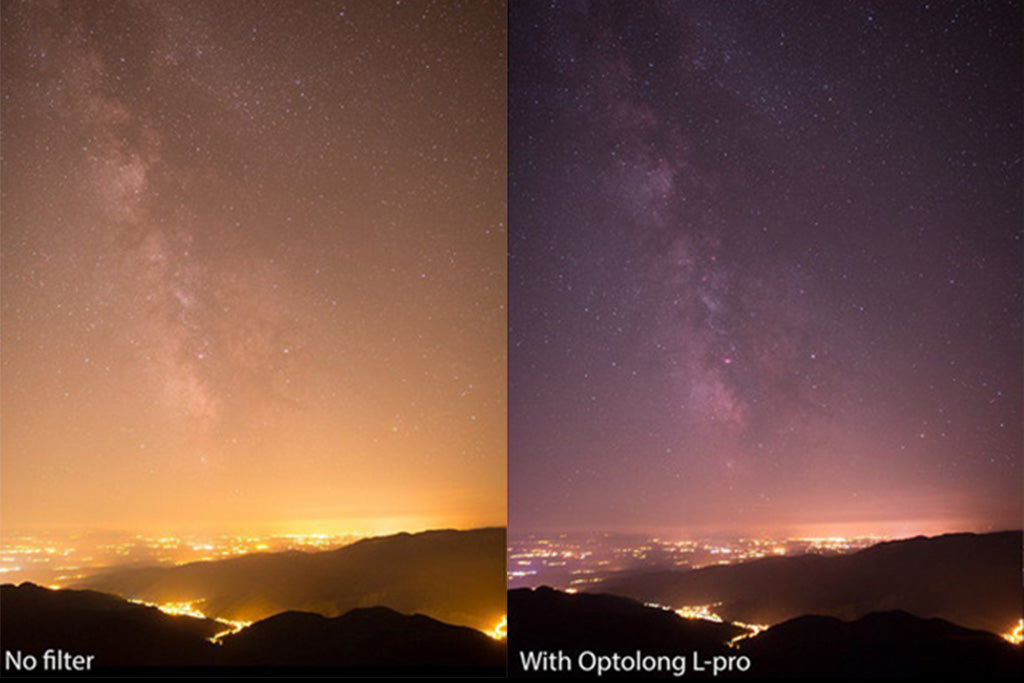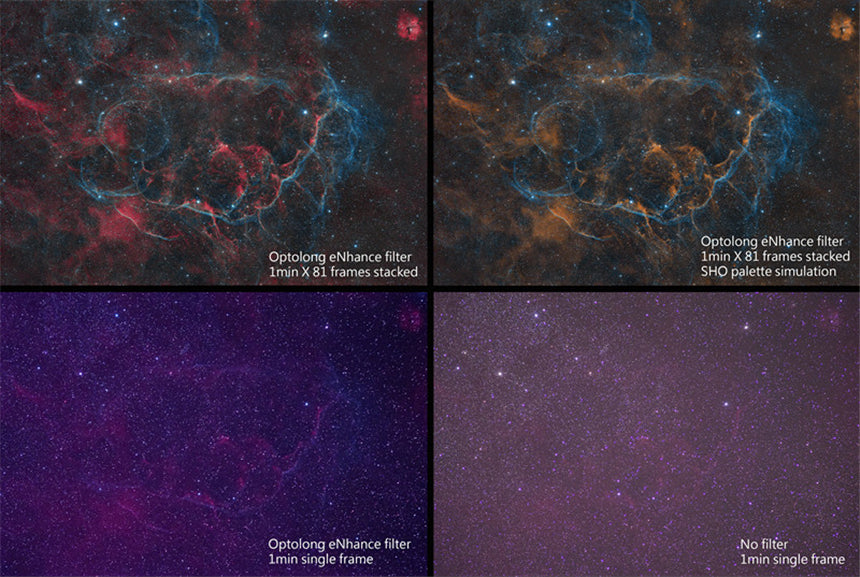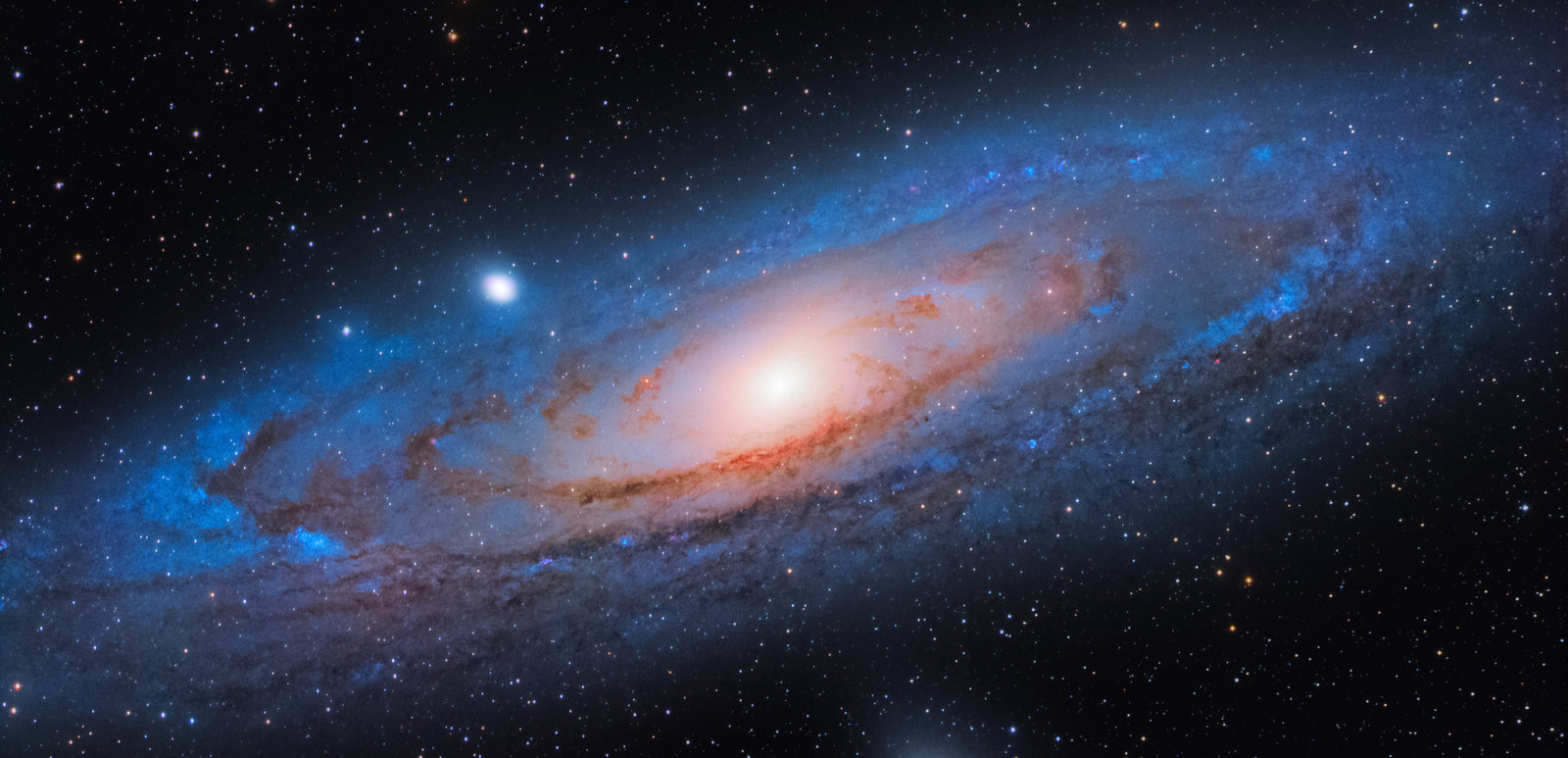Multi-Broadband Filters

Best for imaging galaxies, reflection & dark nebulae, and star clusters
Multi-broadband light pollution filters are a great choice for photographing galaxies, reflection nebulae, dark nebulae, star clusters, and other broadband targets from under unwanted light interference. Multi-broadband filters work by allowing large portions of the spectrum to pass through, but blocking out common sources of obtrusive artificial light.
Though there's no true substitute for dark skies, broadband filters can drastically reduce the color gradients and glow effects often seen when imaging from light interference. See the above comparison image from Optolong to see how a broadband filters can enhance the contrast and give more natural sky colors. While multi-broadband light pollution filters can be somewhat effective for imaging emission nebulae, multi-narrowband filters are much better suited for allowing light from emission nebulae to pass through.
Shop Multi-Broadband Filters
Multi-Narrowband Filters

Best for imaging emission nebulae, planetary nebulae, and supernova remnants
Multi-narrowband filters, also known as multi-bandpass light pollution filters, are the ideal choice for any celestial object that emits light in a specific part of the spectrum. This includes emission nebulae, planetary nebulae, and supernova remnants, which all feature gases that emit light at narrowband emission lines. This includes Hydrogen Alpha (Ha, red color), by far the most common gas found in nebulae, and other prominent gases such as Oxygen III (OIII, aqua color), Sulfur II (SII, deep red color), and Hydrogen Beta (Hb, green color). Multi-narrowband filters allow multiple emission lines to pass through at once, meaning you can capture useful data on targets that emit multiple emission lines such as Hydrogen Alpha and Oxygen III in one go with a color camera.
Mutli-narrowband filters work by isolating these emission lines and blocking out everything else, effectively eliminating most obtrusive artificial light. For this reason, multi-narrowband filters are best paired with astronomy-dedicated cameras or modified DSLRs, but they can have a limited response on stock DSLRs as well. Lower-end light pollution filters allow a wider bandpass, which lets in more light interfereance than higher-end filters. Higher-end filters like the Radian Triad Ultra use a narrower bandpass, which allows the nebulae to appear more contrasted from the background of space. This leads to more pleasing images, and the ability to take great deep sky images even from heavily light-polluted areas.
Explore Multi-Narrowband Filters













